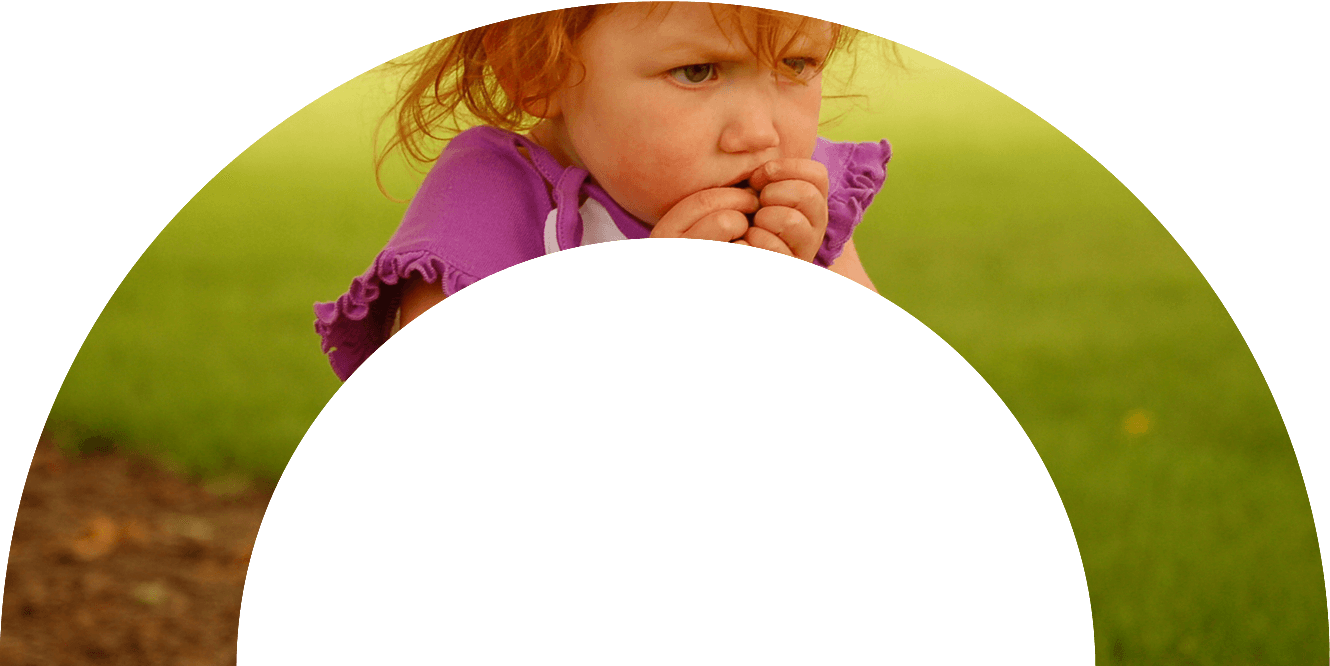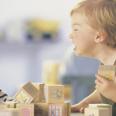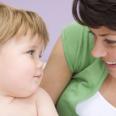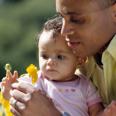Mental health problems in young children can have important implications for their development. It is important to understand the causes, symptoms, effects and best intervention practices to recognize and prevent anxiety and depression in young children.
Synthesis PDF Complete topic PDFInformation sheets
Download the free PDF version here or purchase hardcopy prints from our online store.
Anxiety and depression
Anxiety and depression: recognizing the early warning signs
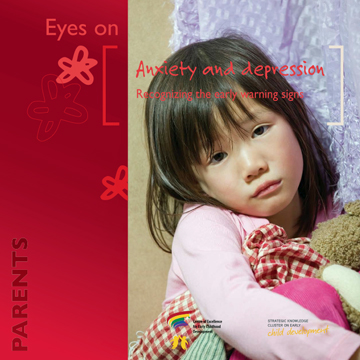
Synthesis
How important is it?
Mental health problems experienced in adulthood often begin in childhood and adolescence. It is estimated that 1 in 7 children suffer from mental health problems worldwide. One of the major types of mental health issues found in childhood is internalizing problems. Internalizing problems are characterized by emotional distress turned inward, which makes these problems difficult to recognize. Unlike normal fear, shyness and sadness, internalizing problems impair a young child’s functioning and development.
Internalizing problems include depression and anxiety. Symptoms of depression in older children include feelings of sadness, eating/weight problems, sleep disturbance, loss of energy and low self-esteem. Although the controversy about diagnosing depression in young children is ongoing, symptoms can be experienced as early as 3 years of age. By 2030, the World Health Organization expects depression to become the second most important burden of disease after HIV/AIDS.1
Anxiety disorders can also cause significant distress and impairment in young children and merit special consideration. Anxiety problems exist when children’s emotional reactions are disproportionate to the nature of the situation they are facing (ex.: tearful outbreaks when being separated from a parent) and when they interfere with the child’s life. Anxiety disorders often preceed major depression.
Although distinct from each other, depressive and anxiety symptoms often overlap and co-occur. This is especially obvious in posttraumatic stress disorder (PTSD). PTSD is a severe psychological condition that can develop following exposure to a trauma and seriously impairs a person’s functioning. An early traumatic experience can lead to long-lasting effects and children who live through it are at risk for developing PTSD.
What do we know?
One of the reasons for the controversy in diagnosing a child with depression or an anxiety disorder is that traditional assessment tools were developed for adults and do not adequately capture impairments that are specific to different developmental stages (e.g., disturbance in family routine). In addition, it is often difficult for young children to explain how they feel. Fortunately, new innovative methods such as puppet interviews and picture tests have been used to help children express their emotions.
The first signs of internalizing problems are often observed in the peer group, where depression and anxiety can manifest themselves as self-consciousness, fearfulness, preoccupation and nervousness. Children with internalizing problems often struggle with initiating contact or conversation, talk very little and make infrequent eye contact. These socially withdrawn behaviours make them more likely to be victimized by peers. The friendships of anxious or depressed children also tend to be less frequent, of poorer quality, and with children who also display internalizing problems, which can worsen existing problems. However, having at least one close friend can also protect a child from some of the detrimental effects of internalizing problems.
Both genes and environment put children at risk for developing internalizing problems. One of the most robust risk factors for anxiety is behavioural inhibition, an early temperament trait characterized by intense fear, distress and reactivity to new situations. The odds of developing anxiety disorders in later life are much higher for children who are behaviourally inhibited in early childhood. Children who are behaviourally inhibited are often socially withdrawn and, as a consequence, are at risk for peer rejection, which can exacerbate feelings of anxiety and isolation.
The link between behavioural inhibition and social withdrawal appears to be particularly strong for children who display attentional bias to threat, a cognitive distortion often related to anxiety. Skills involving executive functions such as cognitive monitoring and inhibitory control can also elevate anxiety in behaviourally inhibited children.
Environmental risk for internalizing problems include certain parenting behaviours. The magnitude of the effect of parenting is small, but appears to be a consistent risk in the development of internalizing problems. Children of mothers who are overprotective, overcritical or use harsh discipline tend to have poor emotion regulation skills and are more susceptible to emotional health difficulties. Parents who are themselves anxious can also put children at risk for anxiety disorders by modeling avoidant or anxious behaviours. The effects of these parenting behaviours are especially strong for children with behavioural inhibition.
Poor attachment is another risk factor for the development of anxiety and depression. Caused by a history of unresponsive and insensitive caregiving environment, an insecure attachment can lead children to develop poor emotion regulation skills and a negative sense of self, both associated with internalizing problems.
What can be done?
An initial necessary step in understanding the development of childhood depression and anxiety is to expand assessment of these conditions in the clinical and research setting through multi-method, multi-session and multi-informant techniques. While including a screening for internalizing problems during standard check-ups might be ideal, targeting at risk children and families may represent a more cost-efficient and realistic method to prevent or reduce negative consequences associated with internalizing problems. For instance, accurate screening in locations where children are at risk for experiencing trauma (e.g., hospitals) or identifying children who are behaviourally inhibited at an early age can have a major impact on children, their families and society at large.
Parents can be reassured that several individual treatments have been found to help children who are depressed or anxious, although consistent treatment programs remain to be developed. Anti-depressant medications have been used with some success among children as young as 6 years, but their use is now limited as a last resort option because of health concerns. Cognitive behavioural therapy (CBT) is the most common and effective method to treat anxiety and depression in childhood. CBT focuses on helping children identify and confront their own distorted thinking habits and involves behavioural techniques that gradually expose children to anxiety-provoking situations. Play-based CBT has been used with children as young as 4 years of age.
Involving parents in treatment is beneficial in reducing symptoms of depression and anxiety. CBT often includes parents in the treatment agenda by coaching them on exposure techniques and teaching them management skills pertaining to anxiety. These interventions further enable parents to optimally adjust their parenting style to their child’s temperament, by becoming less overprotective and less anxious. In cases of posttraumatic stress disorder, interventions should target both the needs of the child and the parents to reduce distress of all parties and promote family functioning.
Early intervention that includes psychoeducation, parental involvement and coping skills training is also key to preventing the development of serious and enduring mental health problems. Early social interactions with peers should be supervised by parents and teachers to check for early signs of internalizing problems, and can even be an ideal target for early intervention focused on social skills training. A collaborative effort between parents, health professionals and child care workers promises to be most effective in creating a stable and coherent environment for children.
Policy makers interested in children’s mental health should give priority to evidence-based programs and quality intervention studies examining treatment effectiveness for depression and anxiety in childhood. Information should be disseminated to service providers about the manifestation of anxiety and depression in early childhood as these internalizing problems often go undetected. Service providers dealing with childhood trauma should also be aware of the systemic impact of a traumatic experience on the family as a whole.
Note:
1 The WHO global burden of disease (GBD) measures burden of disease using the disability-adjusted-life-year (DALY). This time-based measure combines years of life lost due to premature mortality and years of life lost due to time lived in states of less than full health. The DALY metric was developed in the original GBD 1990 study to assess the burden of disease consistently across diseases, risk factors and regions. (http://www.who.int/topics/global_burden_of_disease/en/)
Additional reading
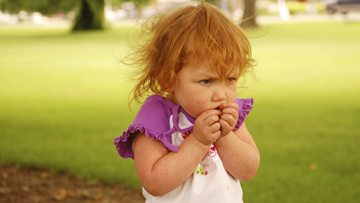 Video
Video
Is your child anxious or depressive?
Anxiety and depression can be hard to detect and diagnose in young children but these problems can start as young as the toddler years.
Anxious or depressed children may appear very shy, tend to avoid social contacts and withdraw from or overreact to unfamiliar situations. They may exhibit intense sadness, fears and worries and have problems eating and sleeping.
These problems can lead to low self-confidence, lack of social skills and risk of peer rejection as they develop.
Parents and caregivers need to pay attention to these early signs in order to help children overcome the long term negative impact of emotional problems.
Publications
Temperament in Early Childhood and the Development of Anxiety and Depression
Early Intervention and Prevention of Anxiety and Depression
Young Children's Peer Relations: Links with Early Developing Anxiety and Depression
Recognition and Assessment of Anxiety & Depression in Early Childhood
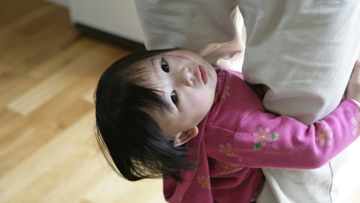 Video
Video
Helping the anxious or depressive child
Parents, child care providers and health care professionals can work together to help children overcome their anxiety and depression.
Working as a team, they can help children to identify and recognize their feelings, redirect their tendency to withdraw and provide them with a safe and secure environment. They can also support the anxious or depressed child to adapt to new situations and teach him how to join in and play with others.
Parents can also adapt their parenting style to their child’s temperament. They can avoid being overprotective or letting their child see their own anxieties.
There are ways to support children with anxiety and depression as well as their parents. Recognizing anxiety and depression is a good start.
Publications
Treatment of Clinical Anxiety and Depression in Early Childhood
Temperament in Early Childhood and the Development of Anxiety and Depression
Early Intervention and Prevention of Anxiety and Depression
Parent-Child Relationships in Early Childhood and Development of Anxiety & Depression
